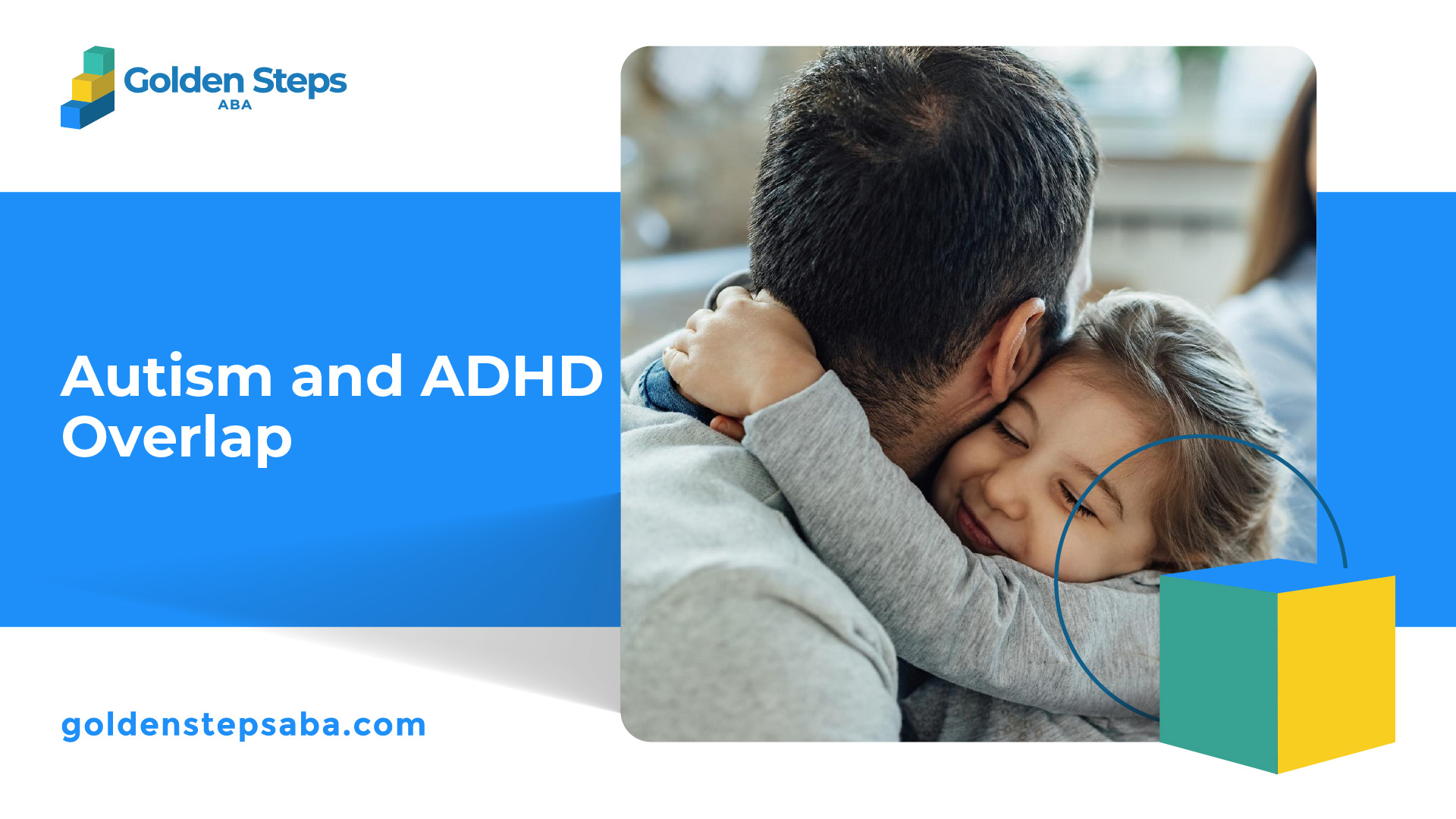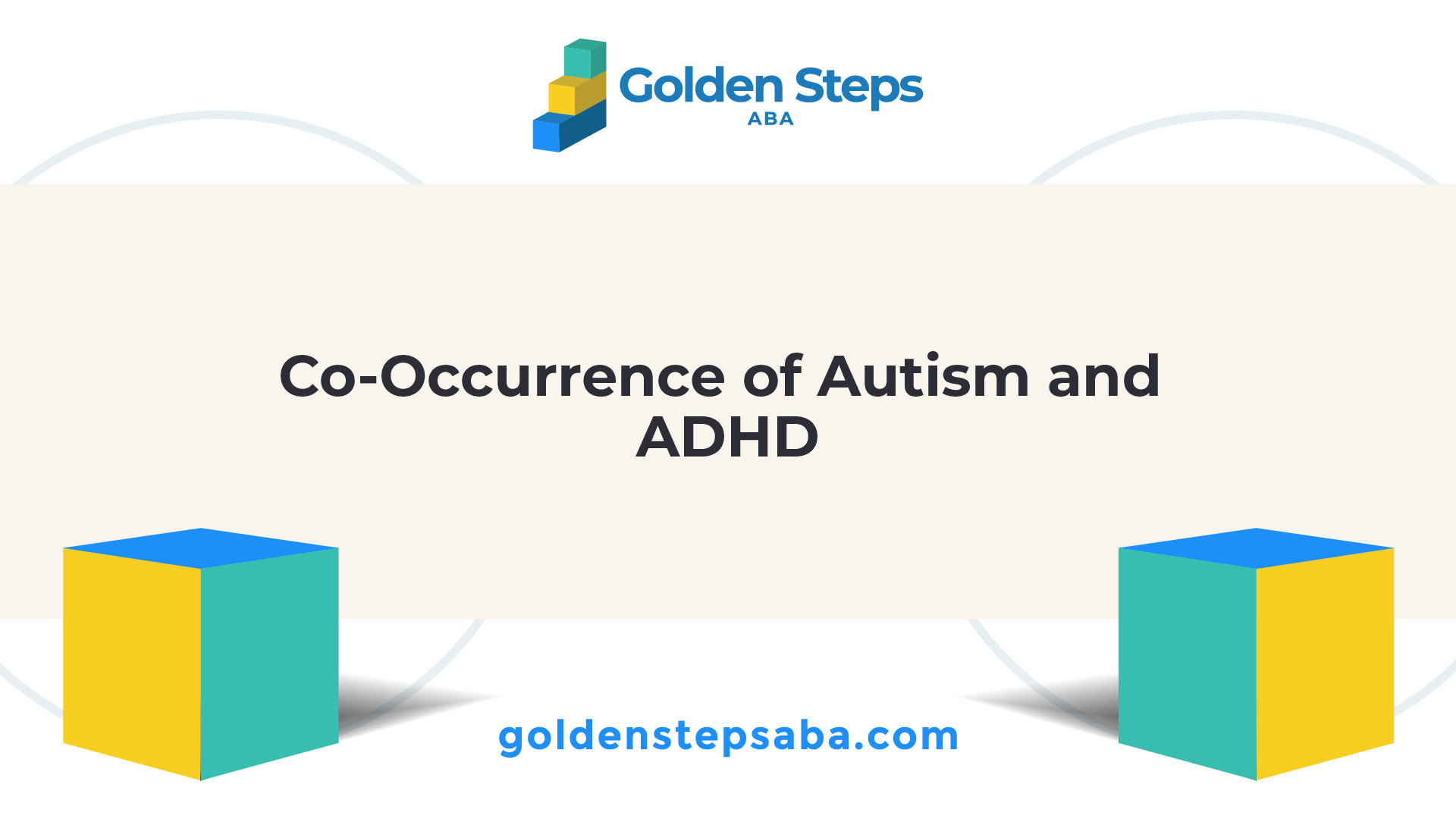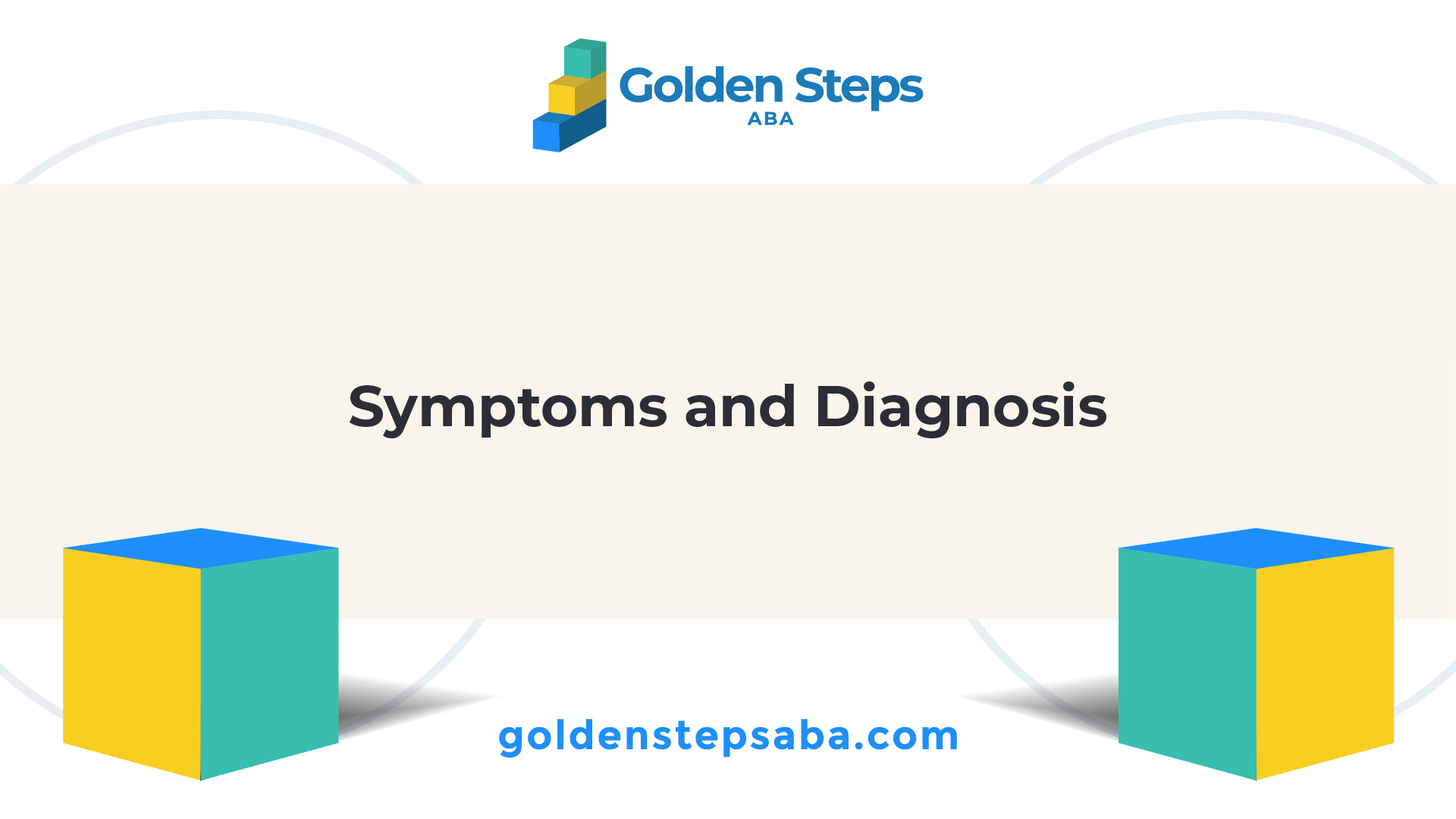Understanding Autism and ADHD
To delve into the overlap between Autism Spectrum Disorder (ASD) and Attention-Deficit/Hyperactivity Disorder (ADHD), it's important to first gain a clear understanding of each condition.

Overview of Autism Spectrum Disorder
Autism Spectrum Disorder, commonly referred to as autism, is a developmental disorder that affects communication, social interaction, and behavior. It typically appears in early childhood, with symptoms often becoming evident before the age of 3. According to the Centers for Disease Control and Prevention (CDC), approximately 1 in 59 children in the United States has received a diagnosis of autism spectrum disorder.
The signs and symptoms of autism can vary widely, but they typically include challenges in social interactions, difficulty with verbal and nonverbal communication, and restricted and repetitive patterns of behavior. Individuals with autism may also exhibit sensitivity to sensory stimuli and may have specific interests or fixations.
It's important to note that autism can present differently in women, making it harder to identify the condition compared to men. While some individuals with autism may have difficulty learning and show signs of lower-than-normal intelligence, others may have normal to high intelligence but struggle with communication, social situations, and applying knowledge in everyday life [3].
Overview of Attention-Deficit/Hyperactivity Disorder
Attention-Deficit/Hyperactivity Disorder, commonly known as ADHD, is a neurodevelopmental disorder that affects both children and adults. It is characterized by persistent patterns of inattention, hyperactivity, and impulsivity that can significantly impact daily functioning. ADHD is estimated to affect around 5-10% of children and about 2-5% of adults worldwide.
Children with ADHD often struggle to pay attention, stay organized, and follow through with tasks. They may also exhibit impulsive behavior and have difficulty sitting still or remaining quiet when necessary. In adults, ADHD can manifest as difficulties with focus, prioritization, impulse control, and time management, which can affect various aspects of their lives, including work, relationships, and social interactions.
ADHD symptoms can vary based on the individual and the subtype of ADHD they have. The three subtypes are predominantly inattentive presentation, predominantly hyperactive/impulsive presentation, and combined presentation. It's worth noting that ADHD can present differently in girls, with symptoms of inattentiveness being more common and disruptive behavior being less apparent, potentially leading to underdiagnosis in females.
By understanding the fundamental characteristics of both autism and ADHD, we can begin to explore the overlap between these conditions and gain insights into the challenges and complexities that arise when individuals are diagnosed with both.

Co-Occurrence of Autism and ADHD
When it comes to neurodevelopmental disorders, the co-occurrence of autism and ADHD is a topic of interest. Both conditions share certain overlapping traits and symptoms, leading to a higher likelihood of dual diagnosis in some individuals. In this section, we will explore the recognition of overlapping traits and the prevalence of co-occurrence based on research findings.
Recognizing the Overlapping Traits
ADHD and autism are often discussed together due to their shared characteristics. While they are distinct conditions, they can manifest in similar ways. Traits such as difficulties with attention, impulsivity, and hyperactivity can be present in both ADHD and autism. Additionally, challenges with social interactions, communication, and repetitive behaviors can be observed in individuals with either condition. It is important to note that the severity and combination of these traits can vary from person to person.
Research suggests that approximately 40% of children with autism also have ADHD, and vice versa. These overlapping traits can make diagnosis and treatment more complex, as symptoms may present differently in individuals with both conditions. It is crucial for healthcare professionals to carefully evaluate and assess individuals to make accurate diagnoses and provide appropriate support.
Prevalence and Research Findings
As more research is conducted, the co-occurrence of autism and ADHD is gaining recognition. Prior to 2013, the diagnostic criteria did not allow for the simultaneous diagnosis of autism and ADHD. However, medical professionals now acknowledge that many individuals meet the criteria for both conditions. The Centers for Disease Control and Prevention (CDC) estimates that approximately 14% of children with ADHD in the U.S. also have autism spectrum disorder. Other research suggests that the co-occurrence rate may range from 15% to 25%.
It is important to note that research findings on the prevalence of co-occurring autism and ADHD may vary due to differences in study populations and diagnostic criteria. However, the general consensus is that there is a significant overlap between the two conditions.
Understanding the co-occurrence of autism and ADHD is essential for providing comprehensive care and support to individuals who present with both conditions. By recognizing the overlapping traits and considering the prevalence based on research findings, healthcare professionals and caregivers can better address the unique needs of individuals with this dual diagnosis. It is crucial to approach diagnosis, treatment, and intervention strategies with a comprehensive understanding of both autism and ADHD, taking into account the individual's specific challenges and strengths.

Genetic Factors and Neurodevelopment
Understanding the genetic factors and neurodevelopmental processes involved in the overlap of autism and ADHD is crucial for gaining insights into these complex conditions.
Genetic Links to Autism and ADHD
Both autism spectrum disorder (ASD) and attention-deficit/hyperactivity disorder (ADHD) have a genetic component, although researchers are still working to fully comprehend the underlying causes of these conditions. One study identified a rare gene that may be linked to both ASD and ADHD, shedding light on why these conditions often co-occur in individuals.
Family-based and twin studies consistently demonstrate that both ASD and ADHD are highly heritable, with genetic influences accounting for approximately 70-80% of the phenotypic variance. This means that genetics play a significant role in the development of these conditions.
Shared and Unique Genetic Variants
Genetic variants affecting nerve cells in the brain and brain development play a crucial role in the development and communication processes associated with both autism and ADHD. While there are shared genetic risk factors between the two conditions, there are also unique genetic variants specific to each condition [9].
Research has shown that individuals with both ADHD and autism carry a genetic risk for both diagnoses. On the other hand, those with only one diagnosis predominantly carry genetic risk variants specific to that particular condition. This genetic "double burden" helps explain why individuals may have both diagnoses [9].
These insights into the genetic links between autism and ADHD have implications for diagnostic guidelines. The revised guidelines now recognize the possibility of individuals receiving both diagnoses, considering the shared genetic risks and supporting the understanding that these conditions can coexist in the same person [9].
By unraveling the genetic factors associated with autism and ADHD, researchers aim to improve diagnostic accuracy and develop more targeted interventions. Continued genetic studies and advancements in diagnostic techniques hold promise for further understanding and supporting individuals with these overlapping neurodevelopmental conditions.

Symptoms and Diagnosis
When it comes to the co-occurrence of autism and ADHD, differentiating between the two conditions can pose challenges due to overlapping traits. However, a proper diagnosis is of utmost importance in order to provide individuals with the appropriate support and interventions they may need.
Differentiation and Challenges
Before 2013, diagnosing individuals with both autism and ADHD simultaneously was not recognized under the criteria set by the American Psychiatric Association (APA). As a result, there was limited research on the overlap of these conditions. However, medical professionals now acknowledge that many children meet the criteria for both autism spectrum disorder (ASD) and ADHD. According to the Centers for Disease Control and Prevention (CDC), approximately 14% of children with ADHD in the U.S. also have ASD, while other research suggests that the number may be as high as 15-25%.
The overlapping symptoms of autism and ADHD can make it challenging to distinguish between the two. Both conditions can involve difficulties with attention, hyperactivity, and impulsivity. However, there are certain characteristics that may help differentiate between the two. For example, individuals with autism often display social communication challenges, restricted interests, and repetitive behaviors, while those with ADHD may primarily struggle with attention, hyperactivity, and impulsivity [1].
Another factor to consider is that individuals with autism often have other developmental or psychiatric disorders alongside their autism diagnosis. According to a study examining data from over 2,500 autistic children in the U.S., 83% of the children had at least one additional developmental disorder, and 10% had at least one psychiatric disorder. These comorbidities can further complicate the diagnostic process and require a comprehensive evaluation by qualified professionals.
Importance of Proper Diagnosis
Obtaining a proper diagnosis is crucial for individuals with overlapping symptoms of autism and ADHD. A comprehensive evaluation conducted by healthcare professionals, such as psychologists or psychiatrists, can help determine the presence of both conditions. Through a thorough assessment, including interviews, observations, and standardized assessments, professionals can gather information about an individual's developmental history, behavior patterns, and social communication skills.
A proper diagnosis not only aids in understanding an individual's unique needs but also guides the development of tailored interventions and support strategies. It enables individuals, their families, and their healthcare providers to access appropriate resources, such as autism support for parents, autism therapy tools and resources, and autism-friendly BCBA. Additionally, a precise diagnosis can help individuals with autism and ADHD access potential insurance coverage for treatments like ABA therapy and autism individualized treatment plans.
By recognizing the challenges in differentiating between autism and ADHD and emphasizing the importance of proper diagnosis, individuals can receive the necessary support and interventions to enhance their overall well-being. It is essential to consult with healthcare professionals who specialize in diagnosing and treating these conditions to ensure accurate assessments and appropriate guidance for individuals with overlapping symptoms.

Treatment Approaches
When it comes to addressing the overlap of autism and ADHD, treatment approaches play a crucial role in helping individuals manage their symptoms and improve their overall quality of life. Two primary treatment modalities for this dual diagnosis are behavioral therapies and medication and intervention strategies.
Behavioral Therapies for Dual Diagnosis
Applied Behavior Analysis (ABA) therapy, renowned for its effectiveness in working with individuals who have autism, offers significant benefits as a therapy for ADHD and autism together. ABA therapy focuses on understanding specific behaviors, implementing strategies to encourage positive behavior, and reducing harmful or disruptive behaviors.
For those with ADHD, ABA therapy involves individualized assessment and intervention plans tailored to meet the unique needs of each person. The therapy aims to enhance attention span, improve organizational skills, and foster social interactions affected by impulsivity or inattention [6]. Through structured and consistent interventions, individuals can develop coping mechanisms and adaptive skills to manage their symptoms effectively.
In addition to ABA therapy, other behavioral therapies such as cognitive-behavioral therapy (CBT) and social skills training can be beneficial for individuals with both autism and ADHD. These therapies focus on addressing specific challenges related to social interactions, emotional regulation, executive functioning, and daily functioning. By providing individuals with practical tools and strategies, behavioral therapies aim to improve their overall functioning and well-being.
Medication and Intervention Strategies
Medication can be an effective component of treatment for individuals with co-occurring autism and ADHD. Evidence supports the use of stimulant and non-stimulant medications to reduce symptoms of inattention and hyperactivity-impulsivity in children and adolescents with this dual diagnosis. However, it's important to note that response rates to stimulant medications are generally lower in children with co-occurring autism compared to those with ADHD alone. Therefore, careful monitoring and individualized medication management are necessary.
In addition to medication, intervention strategies can greatly benefit individuals with autism and ADHD. These strategies may include creating structured routines, providing visual supports, utilizing assistive technology, and implementing behavior intervention plans (BIPs). BIPs outline specific strategies to address challenging behaviors and promote positive alternatives [11]. These interventions can help individuals with autism and ADHD navigate daily activities, improve focus and attention, manage impulsivity, and enhance overall functioning.
It's important to note that treatment approaches should be individualized to meet the unique needs of each person. Collaborating with a multidisciplinary team, including healthcare professionals, educators, and therapists, can help develop and implement tailored treatment plans. The goal is to provide comprehensive support that addresses both the autism and ADHD symptoms, promoting optimal development and well-being.
By combining behavioral therapies and medication and intervention strategies, individuals with autism and ADHD can access targeted support and interventions to manage their symptoms effectively. Ongoing evaluation and adjustment of treatment approaches are essential to ensure the most beneficial outcomes. It's important for individuals and their families to seek guidance from healthcare professionals specializing in both autism and ADHD to determine the most appropriate and effective treatment plan for their specific needs.
Future Insights and Implications
As researchers continue to delve into the overlap of autism and ADHD, genetic studies and diagnostic improvements are providing valuable insights and potential implications for the future.
Genetic Studies and Diagnostic Improvements
Genetic factors play a significant role in the development of both autism and ADHD. Recent research has identified genetic variants that affect nerve cells in the brain and brain development, contributing to the development and communication processes related to these conditions. Interestingly, some genetic variants that increase the risk of autism also enhance cognitive functions, while variants increasing the risk of ADHD generally reduce cognitive functions in individuals.
One study has even identified a rare gene that may be linked to both autism and ADHD, potentially explaining why these conditions often co-occur in the same person. Understanding these genetic links can contribute to improved diagnostics and personalized treatment plans by identifying individuals at risk and providing appropriate interventions [9].
Enhancements in diagnostic guidelines are another area of focus. Research findings have demonstrated that individuals with both ADHD and autism carry a genetic risk for both conditions, supporting the revised diagnostic guidelines that allow for the possibility of receiving both diagnoses in the same person. These updated guidelines help provide a more accurate understanding of the complex nature of these conditions and allow for more individualized treatment plans [9].
Enhancing Understanding and Interventions
The insights gained from genetic studies and advancements in diagnostics hold the potential for significant improvements in understanding and interventions for individuals with autism and ADHD. By identifying the genetic risk factors associated with these conditions, it becomes possible to develop more targeted and tailored treatment approaches.
Improving diagnostics can lead to earlier identification, allowing for timely interventions and support. Early intervention has been shown to be crucial in optimizing outcomes for individuals with autism and ADHD. With enhanced understanding of the genetic underpinnings, clinicians and researchers can work towards developing more effective and individualized treatment plans.
Furthermore, the continued exploration of the genetic basis of autism and ADHD may pave the way for the development of new therapeutic targets and interventions. By uncovering the specific biological mechanisms underlying these conditions, researchers can identify potential avenues for intervention and the development of novel treatment strategies.
In conclusion, ongoing genetic studies and diagnostic improvements are shedding light on the complex relationship between autism and ADHD. By understanding the genetic links and utilizing this knowledge to enhance diagnostics and interventions, we can strive towards better outcomes for individuals with these conditions. The future holds the promise of improved understanding, more accurate diagnoses, and tailored interventions to support individuals with autism and ADHD in leading fulfilling lives.

